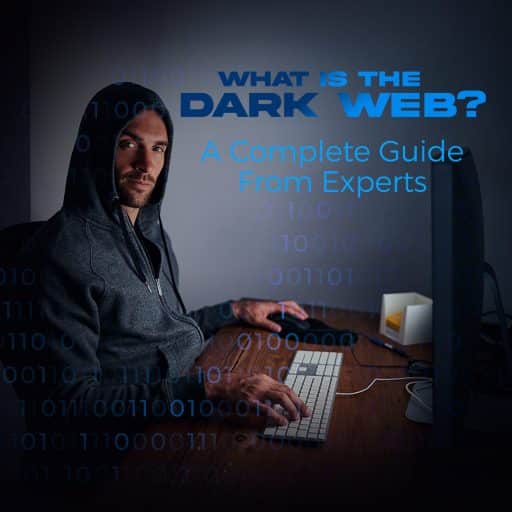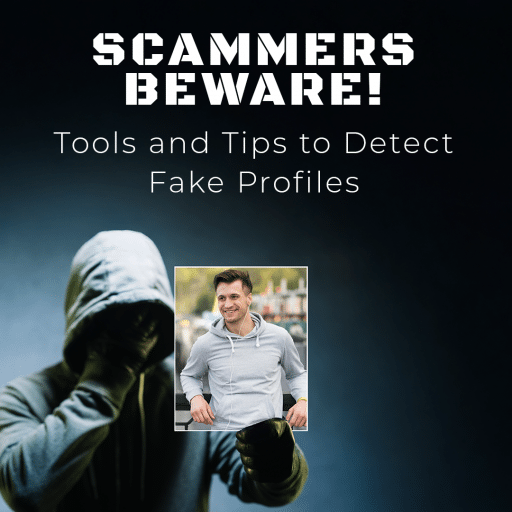The internet is a wide-open field of information, media, and communication. In many ways, the internet has made our lives easier while also making them more exposed.
We’ve become reliant on the internet to plan our days, purchase things, perform our work, and exchange sensitive information. On the dark web, the exchange of stolen information and personal details has become a way to use the internet for criminal activities.
But what exactly is the dark web? This part of the internet is not one you would easily find in your average day of web browsing.
The dark web would need to be accessed by special software or browsers, keeping it separate from the internet used by the general public. Because it is essentially separate from a typical internet experience, you don’t need to be concerned about accidentally finding yourself stumbling onto the dark web.
Understanding what the dark web is and the threat it can pose can help keep you safe. We’ll be diving into the information you need to know about the dark web and what steps you can take to protect yourself from the bad actors who use the dark web to conduct their business.
What Lies Beneath the Deep Web vs. the Dark Web?
The dark web is a place that isn’t found on typical search engines like Google or Bing. In fact, the only way to access it properly would be to use a specialty browser like Tor Browser.
Tor Browser itself isn’t inherently bad — it’s a special browser that allows people to access many sites and resources more anonymously. Strictly speaking, it isn’t too unlike the VPN (virtual private network) software that is being advertised for more secure browsing.
A traditional browser like Chrome was created by Google and will adhere to the standard practices of a browser. VPNs can be used alongside the browser to perform typical activities like watching Netflix, but with a VPN, you can see shows that may be region-locked. Tor Browser uses nodes and onion routing to traverse parts of the internet that are not usually seen.
To understand the internet and its layers we should start by discussing what the layers are. After all, it consists of over a billion different websites. Which are safe to browse and what areas of the internet should you avoid?
Let’s break down the layers of the internet.
The Surface Web
The surface web is the part of the internet you access on a daily basis. It’s the websites you can find through Google and Bing, accessed with your basic internet connection and a traditional browser. The surface web is also sometimes referred to as the open web, indexed web, or visible web.
The surface web contains sites like typical e-commerce sites used for purchasing products and services. These are sites like Amazon, eBay, big-name brand stores, small retailers, and everything in between.
Most businesses use the surface web to promote their brand. Your bank, a local business, a non-profit, and large companies all use the internet to host a website. Social media platforms use apps but can also be accessed from the surface web. News websites are also indexed sites that are easily accessible through the surface web.
The surface web is actually a very small fraction of the internet. This disproportionate amount of available websites on the surface makes the totality of the internet more like an iceberg. What we’re seeing on the surface is just the beginning of what is out there.
The Deep Web
The deep lies just below the surface web, a massive number of sites that aren’t indexed by search engines. The deep web makes up the majority of the internet as we know it. While the name “deep web” may sound scary or menacing, it is actually a fairly straightforward idea and serves an important purpose.
The deep web is made up of pages that aren’t indexed by search engines intentionally. These pages are hidden to protect the privacy of users and are typically only accessible by providing the proper credentials. Let’s take a look at a couple of instances of sites on the deep web.
Corporations, educational institutions, and government agencies use a system called the intranet. This is the ability to share important information through a secure system that would require credentials in order to access the system.
The same goes for database systems that store large amounts of data. These databases are sometimes publicly accessible and other times they can only be reached by going to a special login page.
There are plenty of sites that can only be accessed by paying to interact with them. Think of Netflix, some news sites, and content creator sites.
Sites like Patreon are popular places to view specialty content from a creator that is hidden behind a paywall. Patient portal sites and storage websites are good examples of sites that are only intended to be accessed by the person who is paying for a service where the information can’t be shared with the general public.
Any website you expect to be able to reach through a login will fall into the non-indexed deep web. When a website is created, the person working on the website or specific page can choose to ask the search engine to index the site or not index the site.
Many websites contain a mix of both types, with a customer-facing site that is publicly accessible and a non-indexed portion intended for internal use. The deep web is not something to be suspicious or afraid of.
It serves a verant purpose that allows everyone to access things that shouldn’t be shared. Things like personally stored details, paid content, and so much more are stored within the deep web.
The Dark Web
The dark web, not to be confused with the deep web, is the bottom layer of the internet. The dark web is a very small niche, with an unknown size. In full, it is much smaller than both the deep and surface web, by far.
The dark web is not indexed and is not readily available to be found on the surface web. In most cases, the dark web is intentionally hidden.
Dark websites are often found through the Tor network, where hackers, scammers, and bad actors can exchange information. The dark web can contain forums for the passing of information and marketplaces for the sale of personal information or marketplaces that act like a black market.
The Tor project allows special web search engines to access these dark sites and people to engage in illegal activities. Those who exist on the dark web can be people who develop scams or work on malware and ransomware.
These cybercriminals work with untraceable forms of currency like cryptocurrency, like Bitcoin. Crypto is not a traceable form of payment unlike a credit card, perfect for those who don’t want their illicit activities to be traced back to them.
How Can I Protect Myself From the Dark Net?
The dark web on its own isn’t inherently evil or bad. It facilitates the ability to engage in any activity, which means it can be a ground for bad actors to exist unmonitored.
You’re not likely to find yourself on the dark web, but your information could end up there if you’re not careful. Here are a few ways to keep yourself safe online to prevent your information from being put on the dark web:
Use Strong Passwords
Take extra steps to protect your devices and accounts. Cyber attacks will focus on trying to gain access to your device through malware or by hackers trying to log into an account you control.
Taking the time to set up strong passwords can be one of the most important steps you take to secure an account. A strong password will not contain any dictionary words, a mixture of alphanumeric and symbols, and be at least 12 characters long.
Two-Factor Authentication
Activating two-factor authentication can be another essential step to take when securing your accounts. Two-factor authentication requires the person logging in to supply a special code to proceed. That means even if the person has the username and password, they must have access to an email account or phone that is tied to the account where the code will be sent.
Avoid Links
When it comes to malware and ransomware attacks, most attacks of this nature occur through clicking a link or opening an attachment. Once a hacker or scammer has gained access to your device or account they will begin to exploit it and steal from you. Don’t click on attachments or links from an unknown source.
Mindful Sharing
Be careful of what you share online across any platform. What you share on social media can be used against you by someone looking to carry out a phishing attack. Someone carrying out a phishing attack will pretend to be someone you know, like a friend, family member, or coworker.
They will ask you for personal details that can be used to gain access to your accounts. Common instances in the workplace are spoofed emails from someone pretending to be a coworker asking for corporate credit card details or login credentials.
It’s best practice to confirm the person’s identity before providing sensitive details. Maybe consider devising a safe word between you and others in such instances.
What Should I Do if I’ve Been a Victim of Dark Web Attacks?
If you’ve been the victim of a phishing attack, identity theft, or data breaches you’ll want to lock down your personal information as soon as possible. Depending on what has been exposed, you’ll determine the proper action you’ll need to take.
Some of the best things you can do immediately are to secure your accounts by changing passwords and setting up two-factor authentication. Things like social security numbers, credit card details, or other personal details may require notification to certain institutions.
Contacting your bank to set up a new credit card or new bank account can be necessary. You can contact the three major credit bureaus to let them know you may be the victim of identity theft. Credit bureaus can put special notices on your account for the opening of any lines of credit.
If your information was stolen as part of an act of cybercrime, you can contact the FBI. It can be a good idea to get cybersecurity issues on their radar so they can investigate and potentially take action on scammers and hackers.
You can also contact your local law enforcement for issues that concern where you live. Depending on the issue, they may be able to help or direct you to a division that can handle more specialized issues like cybercrime.
Digital Forensics can help you and your company take on any instance of cyber security. Whether you’ve experienced a data breach, identity theft, ransomware attack, or phishing attack, we can help.
Our team is specially trained to identify and unveil the attackers, help secure your sensitive data, and give you the tools you need to get back online safely. Our team is available 24/7 by our toll-free number and can be reached through our online live chat. You can also request help through the form on our website.
Conclusion
The dark web has the potential to be a seedy underbelly of the internet. But in your daily use of the internet, you’ll likely find yourself mostly on the surface web and deep web. Going beyond those layers into the dark web can be similar to venturing down a dark alley.
It’s not dangerous by design but comes with implications of hidden actions — it’s an area that can leave you vulnerable. By practicing safe online habits, securing your accounts, and understanding how the internet works, you can browse securely.
Sources:
How Many Websites Are on the Internet? (2024 Stats) | Hosting Advice
What’s the Dark Web? | Google Support






